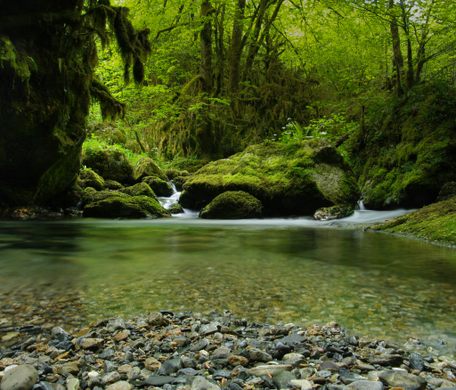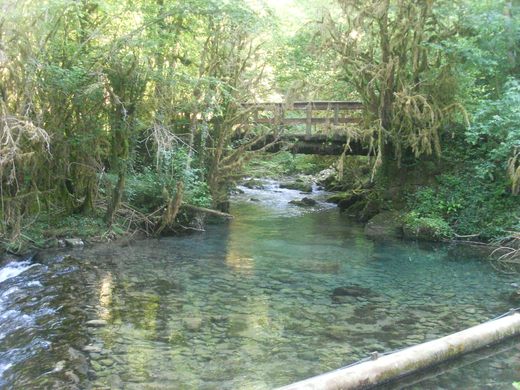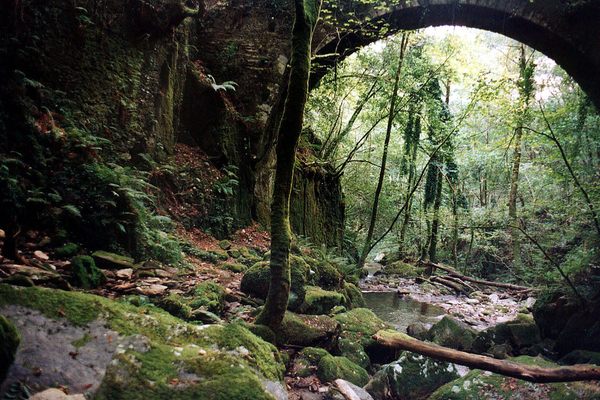AO Edited
Gourgue d'Asque
A French valley with forests so lush it was nicknamed "the Small Amazonia of the Pyrenees."
With giant centipedes scurrying around and rocks and trees covered with moss and lichens, visitors to the Gourgue d’Asque might think they have wandered out of Europe and into a rainforest somewhere south of the equator. They are still in France, though, down near the Spanish border.
Just south of its namesake commune, the gorge was formed through thousands of years of erosion by the Arros River. Intense humidity in the valley carved out of limestone resulted in the lushness of the forest that grew there, which earned it its nickname, the “small Amazonia of the Pyrenees.”
In addition to covering rocks and trees, lichens hang down from branches like tentacles, adding to the otherworldly feel of the place. Otters play in the river and vibrantly colored fire salamanders can be found among the ferns. St. John’s wort, showy toothwort, and mother-of-the-evening are among the more colorful plant life. Resident trees include maples, chestnuts, and birches. There are also caves that, like the gorge itself, were created by the force of the river water.
The density of the trees protects the gorge from becoming too hot and mostly shelters hikers if it starts to rain. It is a safe and educational hike that attracts entire families. Explanatory signs along the paths teach hikers about the natural wonders of the Gourgue d’Asque, while other signs keep hikers aware of where they are and how to get back. Hikers sometimes add to the beauty by building cairns (arranged stacks of rocks) to mark their way. The gorge is a protected Natural Area of Ecological Fauna and Flora Interest.
Know Before You Go
To access to the gorge follow the chemin de la Gourgue, from the D26 to the hamlet of Couret (commune of Asque) to a parking. There is a path of discovery and interpretation with a lot of information about the environment. The trail is easily passable, but take hiking shoes and warm clothes, the weather changes quickly in the mountains. The recent addition of gravel to the first part of the path has made it more accessible to those with limited mobility. The whole 9-kilometer path takes about 3 hours to traverse.




















Follow us on Twitter to get the latest on the world's hidden wonders.
Like us on Facebook to get the latest on the world's hidden wonders.
Follow us on Twitter Like us on Facebook